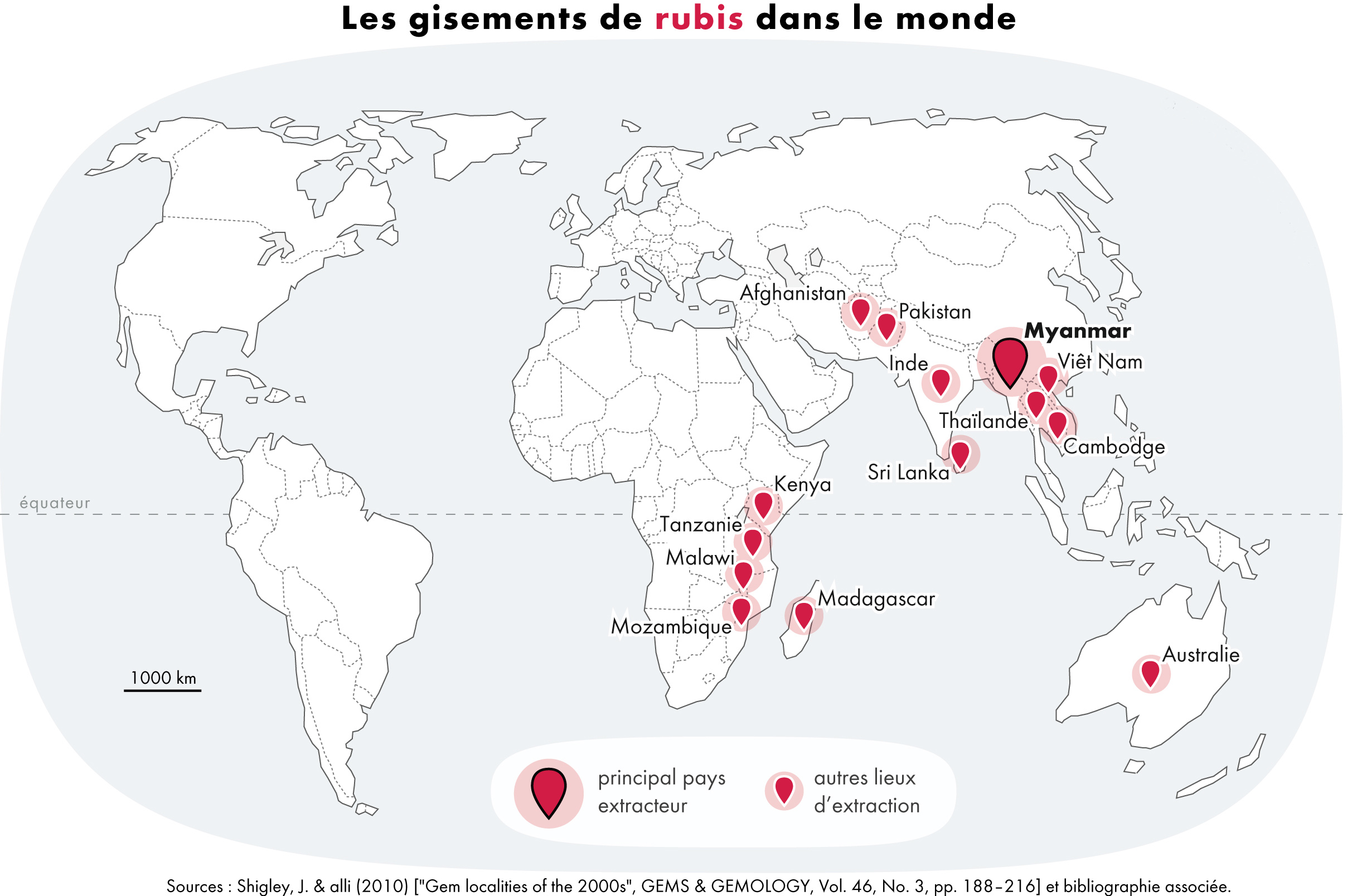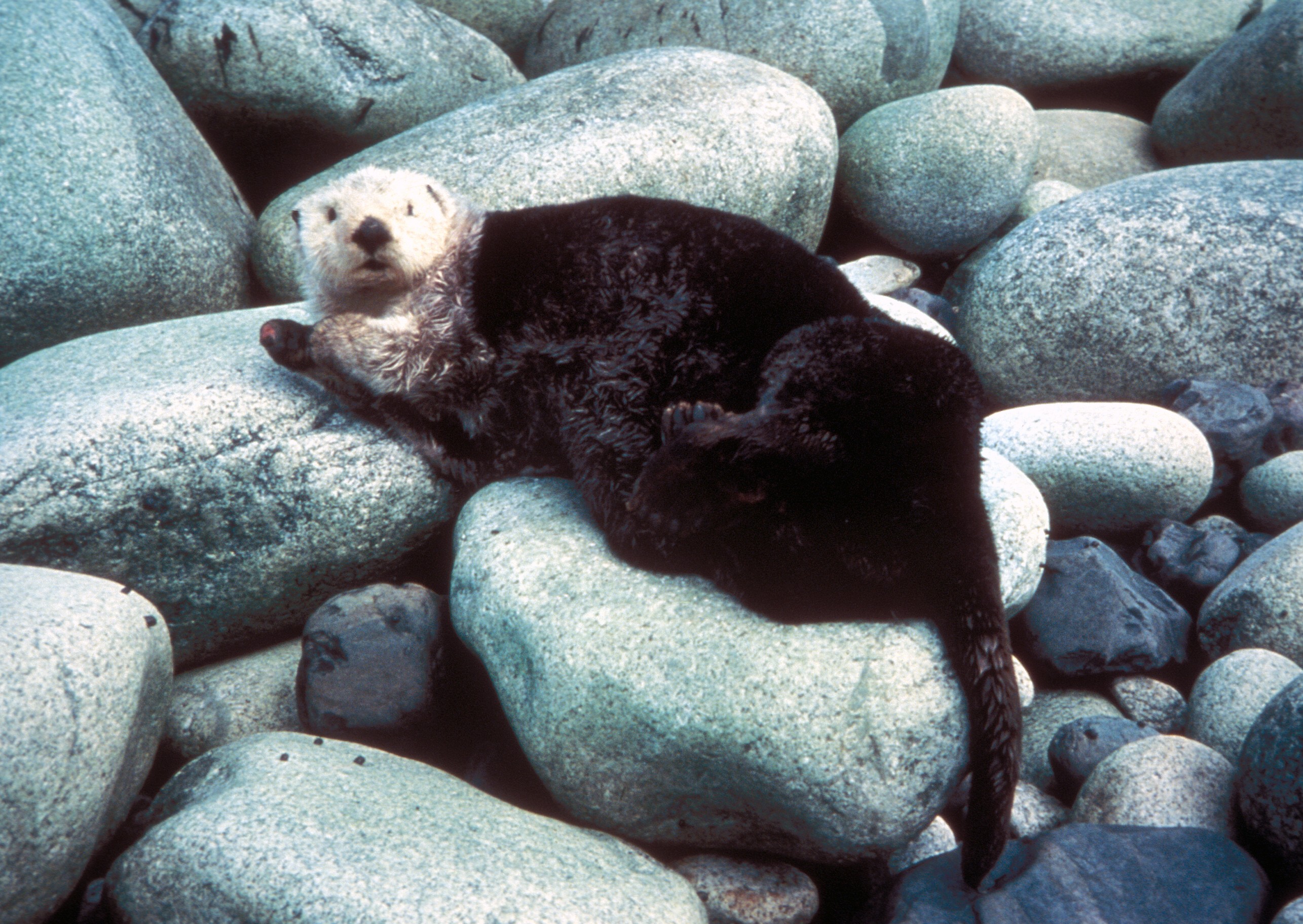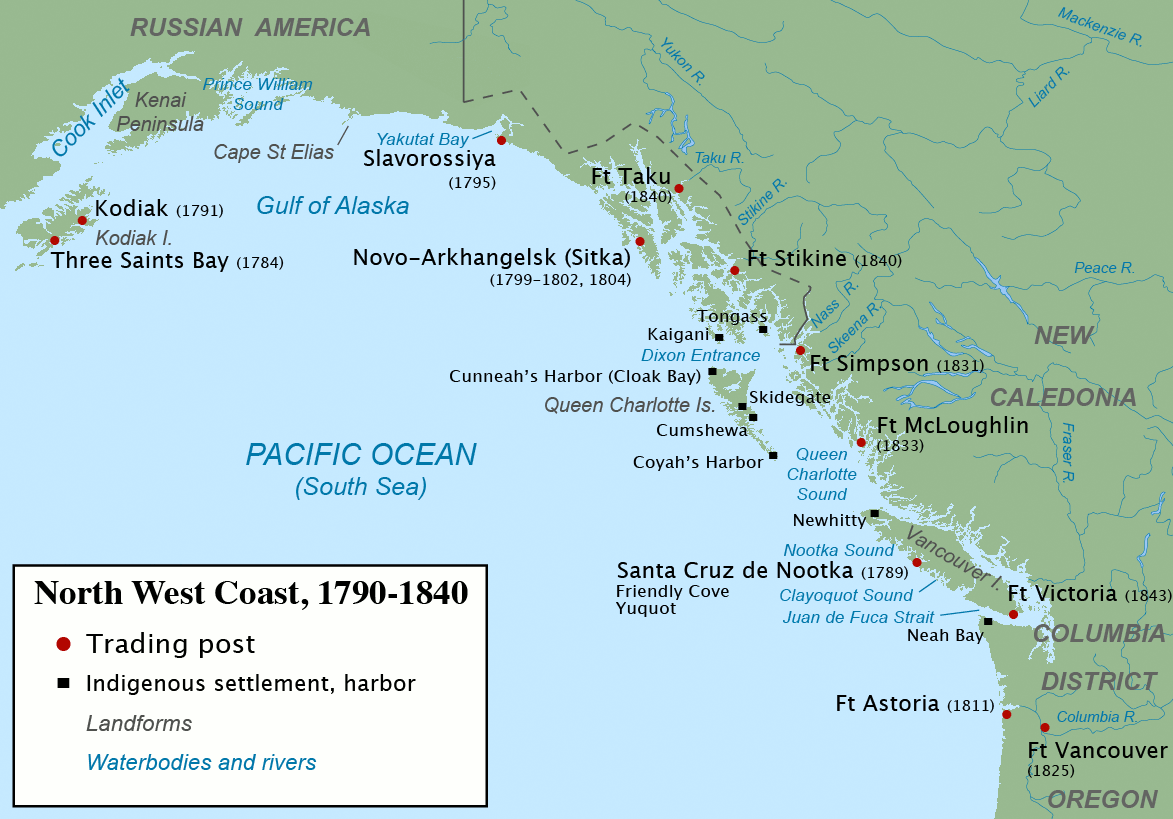|
Cloak Bay
Cloak Bay is a bay in Haida Gwaii, British Columbia, Canada. It is located on the west side of Langara Island, between Langara and Graham Island, at the northwestern end of Haida Gwaii. It adjoins Parry Passage, the strait between Langara and Graham Island. There are several islands in Cloak Bay, the largest being Cox Island. Indian Reserves on or near Cloak Bay include Guoyskun 22, on the north side of Cloak Bay, and Kioosta 15, on Parry Passage. The historic Haida village of Kiusta is the main settlement in the area. The Spanish explorer Juan Pérez was the first European to visit the area of Cloak Bay. He reached the area in July 1774 and met with a group of Haida near the northwest tip of Langara Island. During the early contact era there were a number of villages on or near Cloak Bay, including Kiusta, Dadens, Yaku, Ta, Chaahl, Chief Cuneah of Kiusta had influence over the region during the maritime fur trade era. Other chiefs, such as Eldarge, Cowe, Skilkada, and Shakes ... [...More Info...] [...Related Items...] OR: [Wikipedia] [Google] [Baidu] |
Haida Gwaii
Haida Gwaii (; hai, X̱aaydag̱a Gwaay.yaay / , literally "Islands of the Haida people") is an archipelago located between off the northern Pacific coast of Canada. The islands are separated from the mainland to the east by the shallow Hecate Strait. Queen Charlotte Sound lies to the south, with Vancouver Island beyond. To the north, the disputed Dixon Entrance separates Haida Gwaii from the Alexander Archipelago in the U.S. state of Alaska. Haida Gwaii consists of two main islands: Graham Island () in the north and Moresby Island (, literally: south people island half, or "Islands of Beauty") in the south, along with approximately 400 smaller islands with a total landmass of . Other major islands include Anthony Island ( / ), Burnaby Island (), Lyell Island, Louise Island, Alder Island ( / ), and Kunghit Island. (For a fuller, but still incomplete, list see List of islands of British Columbia.) Part of the Canadian province of British Columbia, the islands wer ... [...More Info...] [...Related Items...] OR: [Wikipedia] [Google] [Baidu] |
Cuneah
Cuneah, also Gunia, Cunneah, Cunnyha, Cunniah, Coneehaw, Connehaw, Cunneaw (Haida: ''Gəniyá'' ( 1789–1801), was the chief of Kiusta, a town at the northwestern tip of Graham Island during the era of the Maritime Fur Trade in Haida Gwaii off the North Coast of British Columbia, Canada. This town was an important port of call for acquiring sea otter skins in the early years of the maritime fur trade. Cuneah seems to have avoided the violence that plagued other Haida chiefs, like Koyah. George Dixon visited the Kiusta area in 1787 and called the inlet where he traded Cloak Bay, for the large number of beautiful sea otter cloaks he acquired there from Cuneah's people. The first European to go ashore and meet Cuneah was William Douglas, in June 1789. In addition to trading goods, Cuneah and Douglas exchanged names, a gesture of good will and honour among the Haida. From that time on the log books of various traders mention the chief as "Douglas Cuneah". A number of American tra ... [...More Info...] [...Related Items...] OR: [Wikipedia] [Google] [Baidu] |
Ruby (merchant Ship)
A ruby is a pinkish red to blood-red colored gemstone, a variety of the mineral corundum ( aluminium oxide). Ruby is one of the most popular traditional jewelry gems and is very durable. Other varieties of gem-quality corundum are called sapphires. Ruby is one of the traditional cardinal gems, alongside amethyst, sapphire, emerald, and diamond. The word ''ruby'' comes from ''ruber'', Latin for red. The color of a ruby is due to the element chromium. Some gemstones that are popularly or historically called rubies, such as the Black Prince's Ruby in the British Imperial State Crown, are actually spinels. These were once known as "Balas rubies". The quality of a ruby is determined by its color, cut, and clarity, which, along with carat weight, affect its value. The brightest and most valuable shade of red, called blood-red or pigeon blood, commands a large premium over other rubies of similar quality. After color follows clarity: similar to diamonds, a clear stone will ... [...More Info...] [...Related Items...] OR: [Wikipedia] [Google] [Baidu] |
Charles Bishop (sea Captain)
Charles Bishop is the name of: * Charles Reed Bishop (1822–1915), Hawaiian businessman *Charles Francis Bishop (1888–1954), US Navy/Medal of Honor recipient *Charles Bishop (cricketer) (1879–1943), English cricketer * Charles A. Bishop (1854–1908), politician and jurist in the State of Iowa * Charles E. Bishop (1921–2012), authority in the field of agricultural economics and president of the University of Arkansas *Charles F. Bishop (1844–1913), Mayor of the City of Buffalo, New York *Charles Lawrence Bishop (1876–1966), Canadian journalist and politician *Charles Bishop (Alabama politician), Alabama senator ''fl''. 1983–present *Charles Bishop (c. 1987–2002), suicide pilot of the 2002 Tampa Cessna 172 crash *Charlie Bishop (baseball) (1924–1993), Major League Baseball player *Charlie Bishop (footballer) (born 1968), English former footballer *Charles Bishop (Home and Away) ''Home and Away'' is an Australian soap opera first broadcast on the Seven Network on 17 ... [...More Info...] [...Related Items...] OR: [Wikipedia] [Google] [Baidu] |
Oregon Historical Society
The Oregon Historical Society (OHS) is an organization that encourages and promotes the study and understanding of the history of the Oregon Country, within the broader context of U.S. history. Incorporated in 1898, the Society collects, preserves, and makes available materials of historical character and interest, and collaborates with other groups and individuals with similar aims. The society operates the Oregon History Center that includes the Oregon Historical Society Museum in downtown Portland. History The Society was organized on December 17, 1898, in Portland at the Portland Library Building.Corning, Howard M. ''Dictionary of Oregon History''. Binfords & Mort Publishing, 1956. Its mission, as expressed in the first volume of its ''Oregon Historical Quarterly'', was to "bring together in the most complete measure possible the data for the history of the commonwealth, and to stimulate the widest and highest use of them." The first president was Harvey W. Scott, with membe ... [...More Info...] [...Related Items...] OR: [Wikipedia] [Google] [Baidu] |
Union (sloop)
''Union'' was an American sloop built in Somerset, Massachusetts in 1792. It is best known for its circumnavigation of the world, 1794–1796, under the maritime fur trader John Boit. The sloop ''Union'' was 94 tons burthen, length overall, beam, and depth. She had a crew of 22, one deck, one mast, and a fore-and-aft rig. Her armament was 10 carriage guns, which were a mix of 6-pounders and 3-pounders, and 8 swivel guns mounted on the rails. ''Union'' was built in 1792 and registered on 8 July 1793. Her original owners were William Burroughs (merchant), John Nicolas (trader), Benjamin Hicks (mariner), and John Finch. She was re-registered on 26 August 1794 under the new owners Caleb Garner (merchant of Newport, Rhode Island), Crowell Hatch and Peter Brooks (merchants of Boston), and master John Boit. After Boit's voyage ''Union'' was sold on 22 July 1796, in Boston. John Boit had served as fifth mate on the second voyage of the ''Columbia Rediviva'' under Captain Robert Gra ... [...More Info...] [...Related Items...] OR: [Wikipedia] [Google] [Baidu] |
John Boit
John Boit Jr (15 October 1774 – 8 March 1829) was one of the first Americans involved in the maritime fur trade. He sailed as fifth mate under Captain Robert Gray on the second voyage of the ''Columbia Rediviva'', 1790–1793. During the voyage he wrote a short but important journal in which he described the discovery of the Columbia River. John Boit was born on 15 October 1774 to John and Sarah Brown Boit, both of Boston. Voyage of the ''Union'', 1794–1796 Shortly after the ''Columbia'' returned to Boston John Boit was given command of the sloop ''Union'' for another maritime fur trading voyage to the Pacific Northwest and China. The sloop was owned by three investors including Boit's brother-in-law Crowell Hatch, who had also been an investor in the two voyages of ''Columbia Redivia'', under Robert Gray and John Kendrick. Boit sailed ''Union'' from Newport, Rhode Island, on 1 August 1794. He passed the Cape Verde Islands without stopping in October. The Falkland Islands ... [...More Info...] [...Related Items...] OR: [Wikipedia] [Google] [Baidu] |
William Douglas (sea Captain)
William Douglas (died 1791) was a Scottish ship captain and an oceanographer maritime fur trader during the late 18th century. He worked with the British trader and Captain John Meares, commanding the ship '' Iphigenia Nubiana''. He was involved in the Nootka Crisis of 1789, which brought Britain and Spain to the brink of war. A few years later he was captain of the American ship ''Grace''. In 1791 he partnered with Captain John Kendrick in an attempt to open trade with Japan. Captain of ''Iphigenia'' Trading voyages of 1788 Douglas was an officer on ''Nootka'' during Meares's first fur trading voyage to the Pacific Northwest coast from 1786 to 1787. In 1788, in Macau, China, Meares formed a partnership of several merchants and captains, and purchased two new vessels, the snows ''Felice Adventurer'' and ''Iphigenia Nubiana''—generally called ''Felice'' and ''Iphigenia''. Meares took command of ''Felice''. He made Douglas captain of ''Iphigenia'' and second in command of the exped ... [...More Info...] [...Related Items...] OR: [Wikipedia] [Google] [Baidu] |
Robert Gray (sea Captain)
Robert Gray (May 10, 1755 – ) was an American Merchant Sea Captain who is known for his achievements in connection with two trading voyages to the northern Pacific coast of North America, between 1790 and 1793, which pioneered the American maritime fur trade in that region. In the course of those voyages, Gray explored portions of that coast and in the year 1790 he completed the first American circumnavigation of the world. He was also noted for coming upon and naming the Columbia River, in 1792, while on his second voyage. Gray's earlier and later life are both comparatively obscure. He was born in Tiverton, Rhode Island, and may have served in the Continental Navy during the American Revolutionary War. After his two famous voyages, he carried on his career as a sea captain, mainly of merchantmen in the Atlantic. He intended a third voyage to the Northwest Coast, but his ship was captured by French privateers, during the Franco-American Quasi-War. Later in that conflict, Gra ... [...More Info...] [...Related Items...] OR: [Wikipedia] [Google] [Baidu] |
Sea Otter
The sea otter (''Enhydra lutris'') is a marine mammal native to the coasts of the northern and eastern North Pacific Ocean. Adult sea otters typically weigh between , making them the heaviest members of the weasel family, but among the smallest marine mammals. Unlike most marine mammals, the sea otter's primary form of insulation is an exceptionally thick coat of fur, the densest in the animal kingdom. Although it can walk on land, the sea otter is capable of living exclusively in the ocean. The sea otter inhabits nearshore environments, where it dives to the sea floor to forage. It preys mostly on marine invertebrates such as sea urchins, various mollusks and crustaceans, and some species of fish. Its foraging and eating habits are noteworthy in several respects. Its use of rocks to dislodge prey and to open shells makes it one of the few mammal species to use tools. In most of its range, it is a keystone species, controlling sea urchin populations which would otherwi ... [...More Info...] [...Related Items...] OR: [Wikipedia] [Google] [Baidu] |
George Dixon (Royal Navy Officer)
George Dixon (1748 – 11 November 1795) was an English sea captain, explorer, and maritime fur trader. George Dixon was "born in Leath Ward, a native of Kirkoswald". The son of Thomas Dixon, he was baptised in Kirkoswald on 8 July 1748. He served under Captain Cook in his third voyage, on , as armourer. In the course of the voyage he learned about the commercial possibilities along the North West Coast of America. History has not served Dixon well; for he is the least known of those who served and or were taught by Captain Cook and is only rarely mentioned in history books. When he is mentioned, he is relegated to a minor figure, overshadowed by the more dramatic figures of Cook and William Bligh, another officer on Cook's ill-fated third trip. In 1782, George Dixon was engaged by William Bolts. The ' newspaper of 29 June 1782 carried a report from Fiume that, "in the early days of this month, Mr. von Bolts, Director of the Triestine East India Company, together with the En ... [...More Info...] [...Related Items...] OR: [Wikipedia] [Google] [Baidu] |
Maritime Fur Trade
The maritime fur trade was a ship-based fur trade system that focused on acquiring furs of sea otters and other animals from the indigenous peoples of the Pacific Northwest Coast and natives of Alaska. The furs were mostly sold in China in exchange for tea, silks, porcelain, and other Chinese goods, which were then sold in Europe and the United States. The maritime fur trade was pioneered by Russians, working east from Kamchatka along the Aleutian Islands to the southern coast of Alaska. British and Americans entered during the 1780s, focusing on what is now the coast of British Columbia. The trade boomed around the beginning of the 19th century. A long period of decline began in the 1810s. As the sea otter population was depleted, the maritime fur trade diversified and transformed, tapping new markets and commodities, while continuing to focus on the Northwest Coast and China. It lasted until the middle to late 19th century. Russians controlled most of the coast of present-d ... [...More Info...] [...Related Items...] OR: [Wikipedia] [Google] [Baidu] |





